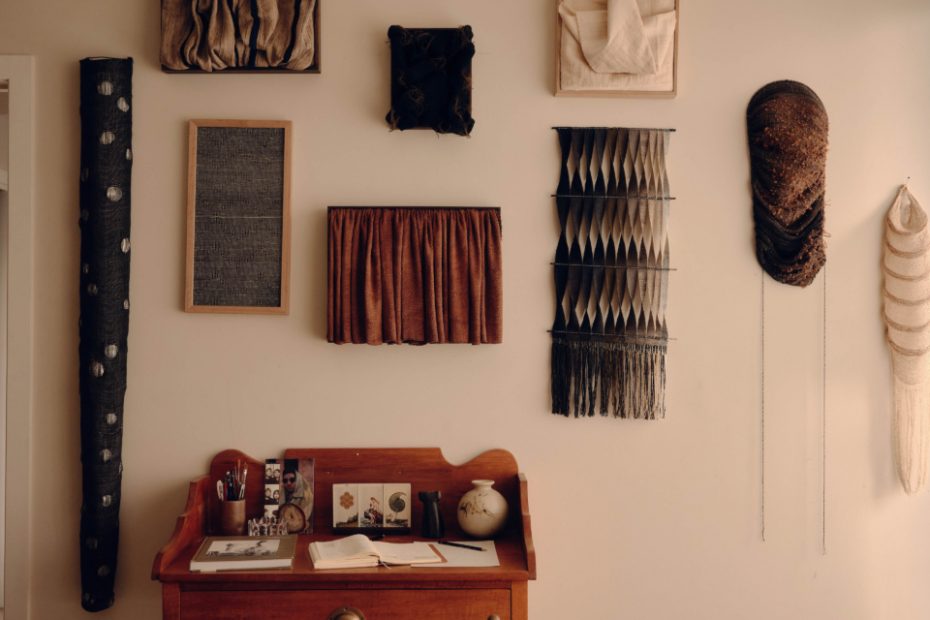This Interior Designer Makes Beautiful Weavings After Hours
Studio Visit
Inside Claudia Bloxsome’s studio.
Interior designer and weaver Claudia Bloxsome.
The detailed works are made exclusively from natural fibres.
Each one reveals takes a unique form, using different weaving techniques.
Inspirations hang above the desk.
One of Claudia’s framed weavings.
Claudia’s adorable cat!
‘The planning process takes a lot longer than most people assume,’ Claudia says.
‘Because you wind the cloth as you go, you cannot see what you have made beyond the previous 20cm of cloth.’
‘To compensate for this visual loss, I use markers in the cloth as I weave and jump between measured sketches in my notebook and the loom to ensure it is developing as intended.’
Claudia uses brass rodding and timber frames as scaffolding for the cloth.
The impressive loom.
‘After cutting the piece off the loom, the finishing process can vary from washing or steaming the cloth to adding in additional fringe or detailing.’
Many artists, athletes, and creatives speak of being in an enigmatic ‘flow state’ when they work at their craft. Those peaceful moments where your body and mind feel completely connected, and you’re so focused that time melts away.
For Claudia Bloxsome, this is exactly what weaving feels like.
‘When I am working at the loom, I feel embodied and present,’ Claudia says. ‘Weaving requires a lot of calculation and forward thinking and simultaneously lends itself to being totally directed by intuition.’
‘I love the idea of experiencing that phenomenon while simultaneously contributing to something for others to enjoy.’
This sensory experience is part of why she fell in love with weaving about seven years ago.
Claudia had just graduated from an interior design course at RMIT and was working for a small furniture design firm called Keith Melbourne.
‘I suddenly had time in the evenings to explore my own creative practice again, and fate would have it that I would make my own frame loom one night out of a dollar-shop canvas frame and some nails — it just felt kismet,’ they say.
‘I became obsessed instantaneously and my love of fibre and weaving has continued to grow.’
Now working for local design practice Kim Kneipp four days a week, Claudia still spends most evenings and days off creating intricate wall hangings and wearable art.
These uniqu pieces are made from exclusively natural fibres including linen, cotton, wool and silks, sometimes adorned with shells or feathers — like dangling charms found in nature.
Aside from the obvious links between interior design and the art of weaving, Claudia says juggling the two has expanded her potential for creative problem solving, composition, and understanding of colour. Because behind each weaving, lies an intense level of planning and preparation.
‘It can require a bit of math,’ Claudia explains. ‘The most challenging aspect of the process is when countless hours have gone into designing, problem solving, testing, preparing the fibre, warping the loom, weaving the piece and then reaching this crucial moment when the work is cut off the tension of the loom and it just doesn’t work.’
‘Of course these are the moments of greatest learning and growth, but boy can they hurt too!’
